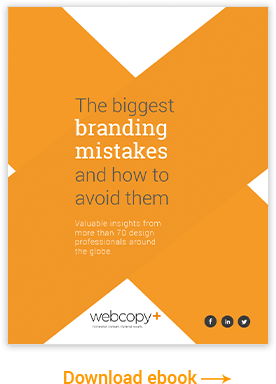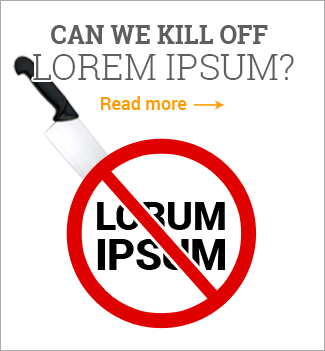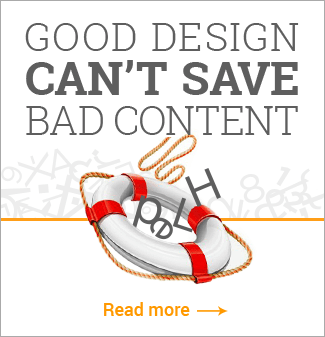
As Web 2.0 matures, the line between marketing and customer service is beginning to blur.
Service mishaps and product breakdowns can no longer be swept under the rug. That’s because more than 70% of US and Canadian consumers use the Internet (InternetWorldStats) and can share their experiences with the world.
“The social revolution is forcing companies to evolve and redesign any and all strategies that include existing or potential customers and stakeholders,” said Brian Solis, Founder of FutureWorks and blogger at PR 2.0. “And,” he added, “many don’t even know it yet.”
Continue reading →

Pretty designs and flowery words don’t provide your visitors value. Relevant website content does.
What’s relevant? It’s whatever your target market deems relevant.
For instance, a frequently asked questions (FAQ) section that provides practical insight into your target market’s common concerns could be regarded the most valuable part of your website. Alternatively, an aggressive pitch for a product your visitor has no use for is a complete waste of time — for all parties involved.
Here are some essentials to deliver useful website content:
Most populations read from left to right, hence, it’s best to align your web writing to the left side of your pages.
Centered or right-aligned text is difficult to read. It causes eye strain, which is bad for visitors and consequently counter-productive for your business. Centered headlines can also hinder readability.
Making your web writing easy to read is a plus for your visitors and your bottom line.

To convert sales, your web content must diagnose your prospect’s sore spot, and explain how you’ll bring them relief.
To simplify the process, try to categorize their difficulties into on of the three main categories:
- Financial
- Strategic
- Personal
By diagnosing a prospect’s problem, and showing you understand and have a proven solution that caters to their specific needs, you’ll significantly increase the chances of converting them into a customer.
If you don’t fully understand your prospect’s issues — even if it’s just their perception — you’ll miss many opportunities.
Don’t rush to make the sales pitch. Ask questions, listen and then discuss solutions.

Common web content mistakes on websites, especially on home pages, include:
Disclaimers – Don’t greet visitors with apologies and excuses for a lame or out-of-date site. Take the suspect pages or sections offline, make time to rectify the content, or hire a professional. Ill-equipped web content can kill your credibility.
Welcome Messages – “Thank you for visiting,” “This site is meant to” and “Take a look around” are unnecessary. In fact, such over-used phrases waste your visitors’ time, and they may return the favor by hitting the back button.
Clichés – Spare your online visitors the cute and the clever. Clichés usually add no value and can create barriers when communicating to global audiences. Webcopyplus has conducted web content conversion tests in which the removal of clichés increased sales. That’s why web content writers need to push their egos aside and write for the target audience.
Vancouver business coach Mark Wardell features an article titled 10 tips for growing your business on his website. One of the points, keep your business spotless, rings true for websites.
He sates: “Unless you own a farm, dirt and clutter give an unprofessional impression whereas a clean business sends a message of professionalism to everyone, including your staff.”
The same goes for websites. Is yours cluttered? Here’s a checklist.
Posted on Jun 9 2008 11:28 pm by Web Copywriters
tags: Web Content Strategy
|
category: Writing for the Web |
2 Comments

A noisy business website distracts visitors, which negatively impacts the bottom line.
Websites often become convoluted over time because businesses don’t invest the time and resources to remove obsolete information.
Many businesses just add content on an as needed basis. But, just as important, businesses should regularly maintain websites. Scheduled clean-ups promote positive online experiences, which translate to increased conversions.
Things to watch out for:
- Outdated information, events etc.
- Too many menu items or links
- Irrelevant web copy or graphics
For a typical business, websites can be maintained by investing one hour, just once a month. During a website audit, I recall an employee who detested the idea of cleaning up a few web pages. But the handful of hours it took him to make those changes are saving thousands of prospects and customers several seconds each visit, which makes it more than worthwhile.
Clean your website to make it easier to do business with you. It makes perfect business sense.

To help your visitors enjoy a positive online experience, it’s important to prioritize the information in your web content.
An effective strategy is to separate the “need to know” from the “nice to know.”
Group your need to know information — anything that is critical to your messaging. And place this relevant information on the top pages of your website.
Then take the nice to know information and place it on secondary pages. Links should be clearly labeled and point to this supporting information.
This nice to know/ need to know strategy complements the inverted pyramid organization, which is the best way to present information on your website.
By neatly providing visitors the relevant material first and support material second, you provide an intuitive information flow. That leads to satisfied visitors and completed tasks.

Knowing your audience is imperative to achieve high conversion rates with your web content.
As you attempt to define your reader, pay heed to his knowledge of the subject. If he’s informed, get right to the key facts and figures. Otherwise, you’ll bore him and turn him off with generic information.
If he’s not well versed with the subject, ensure you provide some basic, high-level information, and offer plenty of references to helpful background material. Sidebars can also be an effective tool in this case.
If you need to cater to a mixed crowd, which is common on the Web, provide high-level material, but include clearly labeled links to all the particulars. This is a web content strategy called link layering, and it’s an incredibly effective way to provide online visitors information that’s relevant to their specific needs.
Continue reading →

Keywords are the foundation to successful web content.
Use the right ones, and your business can thrive. Use the wrong ones, and your website will reap you few rewards, if any. The trick is to ensure your web content writer or writers use the same language as your target audience.
Business executives and managers are often surprised when they find out internal lingo isn’t used by prospects and customers. “Talk shop” with consumers and you risk alienating them.
For instance, airline executives religiously use the term “reduced fares.” But that term is used in search engines less than 10 times a day — and that’s on a global scale.
Meanwhile, “cheap flights” is plugged into search engines by Internet users more than 10,000 times a day.
If you were running an airline, which search term would you want to target?












